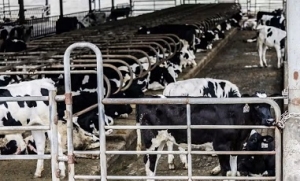Economic - Markets
Will Milk Prices Rebound? 8 Important Market Signals to Watch

Drink or Eat Dairy?
The leading dairy economist shared that low consumption of fluid milk sales can be tied to the fact that many Americans are too ‘lazy’, as he would call them, to sit down and pour their cereal and add milk to the bowl.
“It’s too much trouble apparently,” he said, although he pointed out that milk is far from dead.
“Dairy is alive and well. We eat more milk than we drink,” he said, sharing that the gains in cheese consumption offset losses in fluid milk sales.
The total dairy per capita consumption slipped 1.2% in 2022 after making new highs in 2021 as losses in butter, yogurt and fluid milk went further than gains in cheese and ice cream.
Exports, or Lack Of
Plourd says that 2023 was a predictably disappointing year for dairy exports. U.S. export value finished the year at $8.11 billion. That is the second largest value of all time but down 16% from the record year of 2022 as both volume and prices eased.
“There are a couple ways to look at this story,” he says. “One way is to say thank goodness for Mexico because if we didn’t have Mexico in the mix last year, cheese pricing would have been a whole lot worse than it was.”
In fact, Mexico took in a record 297 million lbs. of U.S. cheese year-to-date through November, which is an increase of 20% year-over-year. U.S. exports of shredded cheese to Mexico soared 162% last year.
“Interestingly enough in the year where the U.S. Dollar was pretty strong or is stable, the Peso was up 14%,” Plourd shared, stating that Mexico has been a reliable partner for U.S. dairy.
Insurance Payouts Boost Income
Crop insurance revolutionized risk management for dairy in 2018 when Dairy Revenue Protection (DRP) was upgraded from the previous Margin Protection Program (MPP-Dairy). Plourd shared that for many producers, 2023 was not as difficult as imagined largely because of insurance programs. Indeed, dairy insurance payouts paid out big in 2023, more than $415 million on 57.7 billion lbs. were paid out from DRP and Dairy Margin Coverage (DMC), as eligible producers enrolled in the DMC program received payments in 11 of 12 months in 2023, receiving an average of $2.80 per cwt. per month.
“It’s a good news, bad news story,” he said. “It's good news if you had the insurance because it helped you get through a tough year.”
Negative Milk Production
U.S. milk production slipped for the seventh consecutive month in a row, along with a drop in cow numbers. Plourd pointed out that the West has contract production, and the Midwest/Mideast has expanded. The question that remains is, will this continue?
Farm Profitability Improving
Plourd shared that the farm profitability outlook is a little bit better for 2024 than it was for 2023. That's due to two things:
-
Class IV prices are high on the forward curve.
-
DMC margins are close to $10.
“That's the best we've seen on this measure in a while and you can see other measures showing farm margins bouncing back,” he says. But, Plourd shares that the DMC factor can favor one section of the country over another, as DMC uses the All-Milk price.
“Generically though, things do look a little bit better,” he says, sharing that feed is getting cheaper, which is friendly for dairy producers. Plourd also noted that additional soybean crushing capacity in the U.S. should help soybean meal become less expensive.
Keeping Plants Full
With a downturn in production, Plourd questions how plant capacity will stay full, especially with some plants in the mid-section of the country expanding capacity.
“For many, we've been sort of in a field of dreams environment with dairy. If you build it, they will come,” he said, noting that today that motto doesn’t necessarily hold true.
Considerable cheese-making capacity is being added to the mid-section of the country, as well as in the Northeast, too, has Plourd saying that the legitimate question is how we are going to keep plants full.
Replacement Inventories Down
The semi-annual cattle report illustrated that replacement inventories are at the lowest level in two decades. Plourd pointed out that the ratio of heifers to cows sits around 43% and a shortage of young animals makes it difficult to grow U.S. output.
With beef demand continuing to be sizzling hot, the trend for beef-on-dairy also remains hot. Plourd questions though, can producers go too far with beef-on-dairy?
“I don’t have the answer, but if you wanted to expand your operation in 2017, you had no problems finding heifers. They were everywhere. That is not true today,” he says.
Higher Interest Rates
We have added 500 basis points to interest rates over the past 12 to 18 months and Plourd notes, “That is real money.”
His back-of-the-envelope math estimates the difference in rates between 2021 and today adds 60 cents per hundredweight to the costs of constructing a new, modern, large dairy in the Upper Midwest
“Probably more,” he notes. “Just out of interest alone. Never mind all the other inflation costs that we’ve seen, so this has been a big sobriety check for new farm development.”
One wild card scenario that we will have to wait to come to fruition is the Presidential Election in November.
“But if you’re just looking at economic data, things are going to have to get a whole lot worse before we see [interest] rates come down,” Plourd notes.
The uncertain dairy economy is likely to continue for the short-term, at least, but keeping a close eye on these market signals provides a glimpse when things might start turning around.























